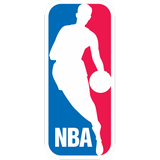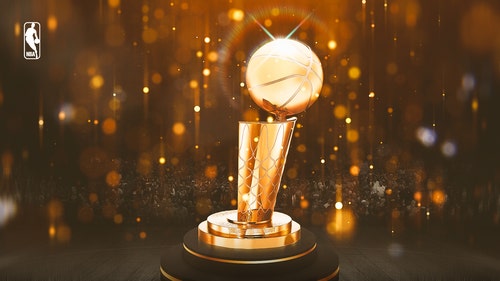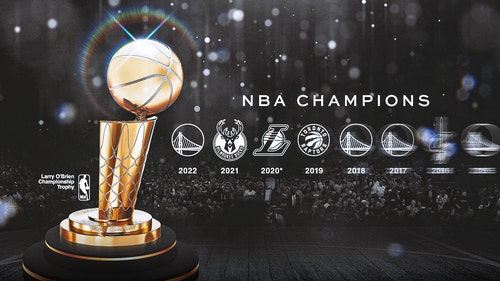
The Godfather Part II: Al Horford looks to carry on tradition in Boston
This story appears in the October 3, 2016, issue of SPORTS ILLUSTRATED. To subscribe, click here.
Shortly after leaving the only NBA team he’s ever known, Al Horford was in Boston with a friend he’s known since his rookie season. It was early July. He was throwing out the first pitch at Fenway Park. David Ortiz was waiting at the plate.
The delivery took a few extra seconds.
Horford’s son, Ean, 17 months old, was on the mound with him, but he was scared of the crowd. He’d wrapped himself around his father’s leg and refused to let go. Finally Horford had to force the issue, winding up and lobbing a soft strike to Ortiz. His son tumbled to the ground, right before his dad picked him up and raised him up like Simba is in The Lion King.
Fenway loved it.
Horford’s welcome to Boston was official.
A few months later the NBA season is approaching, and there are plenty of ways to explain what Horford means to the Celtics. For one, he’s the first All-Star free agent to choose Boston in decades. He’s been consistently excellent over the past nine seasons in Atlanta, and he should be a significant upgrade over Jared Sullinger, the undersized center who signed with the Raptors as a free agent. What’s more, the skills that set him apart from his frontcourt peers—the spot-up shooting, the passing, the versatility on defense—make him a dream fit in a Celtics scheme that surprised the league with 48 wins last season.
But there’s another side of Horford’s story—and what he brings to his new city—that’s more interesting than defensive switching, or the mechanics of the Atlanta’s offense versus Boston’s. It was on display that day at Fenway. After the Red Sox game, Horford took to Twitter and posted a photo of himself in the clubhouse with stars David Ortiz and Hanley Ramirez, both of whom, like Horford, come from the Dominican Republic. The caption read, “Con mi gente!”
Translated: With my people.
*****
Al Horford first met David Ortiz during a Celtics playoff game. He was a rookie, and the Hawks were in Game 1 of a series against the Celtics. “[Ortiz] got courtside seats right near our bench,” Horford remembers of that 2008 game. “And I look over, and he’s pointing at me.”
Horford was coming off back-to-back national titles at Florida. He’d been the No. 3 pick in the NBA draft. And he was the son of Tito Horford, the Dominican Republic’s most famous basketball player ever. Still, he was amazed that Ortiz even recognized him.
“I’m a baseball fan,” Horford says. “I always pulled for where the Dominican players play. So growing up, it was Sammy [Sosa] with the Cubs. But then more recently it was David, and Manny Ramirez and Pedro Martinez. So the fact that he was acknowledging me and wanted to get to know me? It was just really, really cool.”

Ortiz sent his number to the Hawks bench that night, and Horford would eventually go meet him and his family. “We had an immediate bond,” he says.
It continued past the playoffs. Whenever the Hawks went to play in Boston, Ortiz would send a car to bring Al to his house. They’d go out to dinner, watch basketball and catch up with each other’s families. When the Red Sox played the Braves, Horford would return the favor in Atlanta.
“He was proud of me,” Horford says of that first meeting. “He told me, ‘A Dominican in the NBA is a little rare.’”
Indeed. Almost any athlete born in the Dominican Republic starts with baseball. Even Al’s father grew up dreaming of the major leagues. Tito laughs about that now. It took him a while, but eventually he realized that 7’1” was too tall for a baseball player.

His son caught on more quickly. “[Former All-Star outfielder] Raul Mondesi, he had a little league in Santo Domingo,” Tito says. “But Al didn’t last too long. He always wanted to follow in my footsteps.”
Tito was the first Dominican to play in the NBA, spending the 1988–89 and ’89–90 seasons with the Milwaukee Bucks (He also played three games for the Washington Bullets). Al was young then, but as he got older he watched his dad travel the world, playing basketball in France and Italy while also playing semipro at home in the Dominican Republic as well as for the national team.

All of it got the younger Horford hooked. He’d grown up with his mom, Arelis Reynoso, in Santo Domingo, but by the time he was 14, the family decided he should go live in Lansing, Mich., where his dad had settled since retiring. He’d have a better chance at a college basketball scholarship, they reasoned.
This made sense, but it wasn’t easy. Horford says he missed his mom terribly, and he was starting high school with “very, very basic” English. “That process,” he says, “that was very challenging.”
“I knew it was going to be hard,” Tito says. “Missing his mom, coming from a different country to Michigan, where it’s winter almost all year round. But we knew he had a better opportunity to fulfill his dreams. His mother and I—we decided that was best for him.”
In time, Horford learned English. He adjusted to the winters. He became a star for Grand Ledge High. He joined the AAU circuit and toured with the Michigan Mustangs. And as his dad tells it, everything changed his junior year at Nike Camp in Indianapolis. Surrounded by the best players in the country, Horford showed flashes of dominance, and soon dozens of colleges were recruiting him.
It was clear the U.S. move had paid off. “I saw him at that camp,” Tito says, “and I told him, ‘You’re going to the NBA someday.’”
*****
By the summer of 2012, Horford had been in the NBA for five years. He’d earned the nickname Godfather as the silent leader on Florida’s title teams, and that role continued at the next level. He’d already made two All-Star Games with the Hawks, and he’d been to the playoffs every year in the NBA. Now he was the star of the Dominican national team.
He wasn’t the only big name, though. Kentucky coach John Calipari had been brought in to lead that team through qualifying for the London Olympics, in part to give Dominican basketball more credibility. “Cal is great,” Horford says. “Like he’s American, he doesn’t speak Spanish—but he did a great job connecting with all our guys. He was trying to help the country and develop the game over there. We were all very grateful.”
As they built the Dominican program, Calipari looked to professionalize the infra-structure—better hotels, better meals, travel stipends. “We really treated it like a franchise,” he says. “It wasn’t just a fly-by-night team. We did it right. And I think Al doing it, more than me coaching, made that statement.”

Since leaving at 14, Horford had turned into the sort of national hero who could make the whole country pay attention. “The moment he steps in the airport,” his father explains of his son’s D.R. profile, “people begin to crowd him. On the street people are yelling, you see paparazzi. Baseball’s always No. 1 in the Dominican Republic, but people looooove the NBA. They got the packages, they watch the games, and he’s the main one they watch.”
Or, as Cal, puts it, “In that country, if Al Horford runs for president, he’s winning.”
In the middle of all this—a decade after Horford’s arrival at Nike Camp—another teenage big man was showing flashes of dominance. Karl-Anthony Towns grew up in New Jersey, but his mother’s family is Dominican, and he’d been invited to try out for the national team. “I thought I could give myself a chance at least,” Towns says. “The one thing I’m not afraid of is failing.”

He didn’t. The best young player in today’s NBA was thrown in among grown men at 16 years old. “Karl was so young,” Calipari laughs, “we had to make his mom come stay in the room with him.”
It was a leap of faith that paid off for everyone. The Dominican basketball federation made KAT part of its future before USA Basketball could steal him. Calipari and his assistant Orlando Antigua forged a relationship that helped Towns land at Kentucky, where he led the Wildcats to the Final Four in his only season. But the biggest beneficiary might have been Towns.
Four years later, a closer look at KAT and everything that makes him dangerous—the passing from the post, touch around the rim paired with perimeter shooting, versatility on both ends—yields an awfully similar profile to Horford’s.
“He had to see,” Calipari says. “[Dominican team assistant] Del Harris said, ‘If you don’t learn to sit in the post, if you don’t learn to play 7 feet, you’re not going to be the player you think you are.’ It’s not about shooting threes, and ball-handling and behind-the-back passes.”

Eventually it clicked. “Part of that was watching Al Horford,” Cal says. “With your body and your talent, this is what the best version of you looks like. That’s what we started down there.”
“Funny enough,” Towns says, “Growing up, I was a huge Florida Gators fan. Huuuuuuuuuge Florida Gators fan. You know, Corey Brewer, Joakim Noah, the national titles together. And I wanted to be the next Al Horford. And I told Al that, to his face.”
Horford is quick to downplay any role in KAT’s rise. “He’s been ready for a long time,” Horford says. “His dad and his mom are great people. He’s always been so mature, I haven’t had to say anything.”
Still, the two have stayed close since those early years. Their families know each other now. They’ll text throughout the year. And Towns says they’ll talk all game long when they face each other. “He’s not even a mentor,” says the Timberwolves’ star. “He’s more like a brother to me. Just taking care of me, taking me under his wing. It’s a huge confidence boost. I can never do anything wrong, because he’ll always have my back.”
*****
It was December 2011. The NBA lockout had just ended, but Al Horford was still in the Dominican Republic. He was getting married to Amelia Vega, a former Miss Universe whom he’d met in, of all places, Boston. And there was a problem.
“We’re down there, and I realize I’m supposed to get a limo for [my wife], to pick her up and take her to where we’re getting married,” Horford says. “And then, obviously being in the Dominican Republic, things never go how they’re supposed to. So three hours before the wedding, we find out that there’s no limo.”
It was also Christmas Eve.
“I literally freaked out,” Horford remembers. “Nothing’s open, I don’t know what’s going to happen.”
Eventually he did what one does in the case of Dominican emergencies. He called David Ortiz: “I’m like, ‘Hey man, this is what’s going on. We’re getting married in a couple hours. I need a car. What am I going to do?’ ”
“Don’t worry,” Ortiz said. “I got you.”

Ortiz wasn’t even on the island at this point, but it didn’t matter. He told Horford to send a friend over to Ortiz’s house to pick up his Rolls-Royce Phantom. “I’ll have it there in 30 minutes,” Ortiz said. “I just gotta get it washed.”

Horford was amazed. “He didn’t even know my guy down there,” he laughs. “I sent a friend of mine. And he picks up the Phantom, brings it over to my wife. . . . And you know, that’s a very expensive car. But [Ortiz] tells me to keep it until I leave. So we’re there for a couple more days, and we have the car the whole time. It’s just one of those things, it shows he has a really big heart.”
Whether it’s Ortiz and Horford or Horford and KAT, the theme here is hard to miss. It’s also not new. “I saw that since I was younger,” Tito Horford says. “[MLB stars] George Bell, Julio Franco, they were always trying to give me advice. When I was in college, Julio Franco let me stay in his house in Boca Raton, for free, until I got myself situated.”
As free agency intensified his summer, Horford was genuinely undecided. He was seriously considering the Wizards, with John Wall and Bradley Beal, and the thought of leaving the Hawks wasn’t easy. “Those last few hours were crazy,” Horford says. “It was a stressful time.”
When asked whether he knew where Al Horford was leaning after they met this summer, Celtics coach Brad Stevens is honest. “No clue,” he says.
After a beat he adds, “I say no clue, but I think it’s more, we walked out of that meeting and said, ‘What an impressive person.’ I told [GM] Danny [Ainge], ‘Everybody that meets with Al Horford today probably feels really good about it, because he’s such a good guy.’”
The next day Ainge and Stevens were leaving the Hamptons after meeting with Kevin Durant when they got a call. Horford was in. “We were getting ready to pull off the runway,” Stevens says. “And the phone rings two seconds before takeoff. It was a great way to finish off our Saturday.”
“I look at Boston,” Horford says. “I just see a lot of potential. That’s what really excites me. As the process started to become a little more real, I felt like it was a possibility to be part of that.”
The Celtics didn’t land Durant in the Hamptons, but Horford was the next best thing: a weapon in the present who may also be a bridge to the future. For a Celtics team loaded with young players and lottery picks to come, it helps to have a Godfather around.
“That’s the goal,” Stevens says. “I don’t think there’s any question about it. The thing that stands out to me from that first meeting, he seems like a really authentic person. I don’t think you can lead by trying to be someone else. You have to be you, and he seems very comfortable with who he is.”
And who Horford is has always been a Dominican story. In Santo Domingo, Grand Ledge, Gainesville, Atlanta. “Dominican players,” his father says, “they’re always looking for ways to help each other, help young guys. It’s in our culture.” Now the story continues in Boston.
After that first pitch at Fenway, Ortiz met Horford in the infield for a hug. Micro-phones picked up the conversation as Ortiz handed the ball to Ean.
“Toma, toma, toma.”
Take it, take it, take it.
“Vamanos.”
Let’s go.
This article originally appeared on









